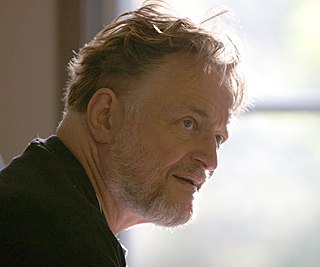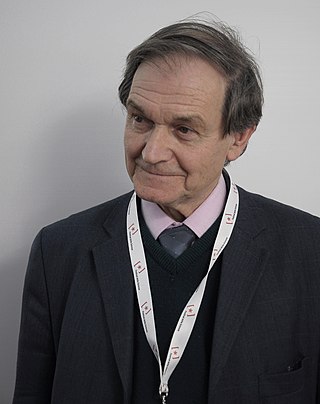
Illumination problems are a class of mathematical problems that study the illumination of rooms with mirrored walls by point light sources.

Illumination problems are a class of mathematical problems that study the illumination of rooms with mirrored walls by point light sources.
The original formulation was attributed to Ernst Straus in the 1950s and has been resolved. Straus asked whether a room with mirrored walls can always be illuminated by a single point light source, allowing for repeated reflection of light off the mirrored walls. Alternatively, the question can be stated as asking that if a billiard table can be constructed in any required shape, is there a shape possible such that there is a point where it is impossible to hit the billiard ball at another point, assuming the ball is point-like and continues infinitely rather than stopping due to friction.
The original problem was first solved in 1958 by Roger Penrose using ellipses to form the Penrose unilluminable room. He showed that there exists a room with curved walls that must always have dark regions if lit only by a single point source.

This problem was also solved for polygonal rooms by George Tokarsky in 1995 for 2 and 3 dimensions, which showed that there exists an unilluminable polygonal 26-sided room with a "dark spot" which is not illuminated from another point in the room, even allowing for repeated reflections. [1] These were rare cases, when a finite number of dark points (rather than regions) are unilluminable only from a fixed position of the point source.
In 1997, two different 24-sided rooms with the same properties were put forward by George Tokarsky and David Castro separately. [2] [3]
In 1995, Tokarsky found the first polygonal unilluminable room which had 4 sides and two fixed boundary points. [4] In 2016, Samuel Lelièvre, Thierry Monteil, and Barak Weiss showed that a light source in a polygonal room whose angles (in degrees) are all rational numbers will illuminate the entire polygon, with the possible exception of a finite number of points. [5] In 2019 this was strengthened by Amit Wolecki who showed that for each such polygon, the number of pairs of points which do not illuminate each other is finite. [6]

John Horton Conway was an English mathematician active in the theory of finite groups, knot theory, number theory, combinatorial game theory and coding theory. He also made contributions to many branches of recreational mathematics, most notably the invention of the cellular automaton called the Game of Life.

In 3D computer graphics, radiosity is an application of the finite element method to solving the rendering equation for scenes with surfaces that reflect light diffusely. Unlike rendering methods that use Monte Carlo algorithms, which handle all types of light paths, typical radiosity only account for paths which leave a light source and are reflected diffusely some number of times before hitting the eye. Radiosity is a global illumination algorithm in the sense that the illumination arriving on a surface comes not just directly from the light sources, but also from other surfaces reflecting light. Radiosity is viewpoint independent, which increases the calculations involved, but makes them useful for all viewpoints.

Sir Roger Penrose is a British mathematician, mathematical physicist, philosopher of science and Nobel Laureate in Physics. He is Emeritus Rouse Ball Professor of Mathematics in the University of Oxford, an emeritus fellow of Wadham College, Oxford, and an honorary fellow of St John's College, Cambridge, and University College London.

The Penrose triangle, also known as the Penrose tribar, the impossible tribar, or the impossible triangle, is a triangular impossible object, an optical illusion consisting of an object which can be depicted in a perspective drawing, but cannot exist as a solid object. It was first created by the Swedish artist Oscar Reutersvärd in 1934. Independently from Reutersvärd, the triangle was devised and popularized in the 1950s by psychiatrist Lionel Penrose and his son, prominent Nobel Prize-winning mathematician Sir Roger Penrose, who described it as "impossibility in its purest form". It is featured prominently in the works of artist M. C. Escher, whose earlier depictions of impossible objects partly inspired it.

In geometry, straightedge-and-compass construction – also known as ruler-and-compass construction, Euclidean construction, or classical construction – is the construction of lengths, angles, and other geometric figures using only an idealized ruler and a pair of compasses.

Daylighting is the practice of placing windows, skylights, other openings, and reflective surfaces so that direct or indirect sunlight can provide effective internal lighting. Particular attention is given to daylighting while designing a building when the aim is to maximize visual comfort or to reduce energy use. Energy savings can be achieved from the reduced use of artificial (electric) lighting or from passive solar heating. Artificial lighting energy use can be reduced by simply installing fewer electric lights where daylight is present or by automatically dimming or switching off electric lights in response to the presence of daylight – a process known as daylight harvesting.

Lighting or illumination is the deliberate use of light to achieve practical or aesthetic effects. Lighting includes the use of both artificial light sources like lamps and light fixtures, as well as natural illumination by capturing daylight. Daylighting is sometimes used as the main source of light during daytime in buildings. This can save energy in place of using artificial lighting, which represents a major component of energy consumption in buildings. Proper lighting can enhance task performance, improve the appearance of an area, or have positive psychological effects on occupants.

Shading refers to the depiction of depth perception in 3D models or illustrations by varying the level of darkness. Shading tries to approximate local behavior of light on the object's surface and is not to be confused with techniques of adding shadows, such as shadow mapping or shadow volumes, which fall under global behavior of light.

A tessellation or tiling is the covering of a surface, often a plane, using one or more geometric shapes, called tiles, with no overlaps and no gaps. In mathematics, tessellation can be generalized to higher dimensions and a variety of geometries.

In geometry, a simple polygon is a polygon that does not intersect itself and has no holes. That is, it is a piecewise-linear Jordan curve consisting of finitely many line segments. These polygons include as special cases the convex polygons, star-shaped polygons, and monotone polygons.

In geometry, the Heesch number of a shape is the maximum number of layers of copies of the same shape that can surround it with no overlaps and no gaps. Heesch's problem is the problem of determining the set of numbers that can be Heesch numbers. Both are named for geometer Heinrich Heesch, who found a tile with Heesch number 1 and proposed the more general problem.

A dynamical billiard is a dynamical system in which a particle alternates between free motion and specular reflections from a boundary. When the particle hits the boundary it reflects from it without loss of speed. Billiards are Hamiltonian idealizations of the game of billiards, but where the region contained by the boundary can have shapes other than rectangular and even be multidimensional. Dynamical billiards may also be studied on non-Euclidean geometries; indeed, the first studies of billiards established their ergodic motion on surfaces of constant negative curvature. The study of billiards which are kept out of a region, rather than being kept in a region, is known as outer billiard theory.
Outer billiards is a dynamical system based on a convex shape in the plane. Classically, this system is defined for the Euclidean plane but one can also consider the system in the hyperbolic plane or in other spaces that suitably generalize the plane. Outer billiards differs from a usual dynamical billiard in that it deals with a discrete sequence of moves outside the shape rather than inside of it.
Geometry is a branch of mathematics concerned with questions of shape, size, relative position of figures, and the properties of space. Geometry is one of the oldest mathematical sciences.

A line source, as opposed to a point source, area source, or volume source, is a source of air, noise, water contamination or electromagnetic radiation that emanates from a linear (one-dimensional) geometry. The most prominent linear sources are roadway air pollution, aircraft air emissions, roadway noise, certain types of water pollution sources that emanate over a range of river extent rather than from a discrete point, elongated light tubes, certain dose models in medical physics and electromagnetic antennas. While point sources of pollution were studied since the late nineteenth century, linear sources did not receive much attention from scientists until the late 1960s, when environmental regulations for highways and airports began to emerge. At the same time, computers with the processing power to accommodate the data processing needs of the computer models required to tackle these one-dimensional sources became more available.

The infinite series whose terms are the natural numbers 1 + 2 + 3 + 4 + ⋯ is a divergent series. The nth partial sum of the series is the triangular number

A reflector sight or reflex sight is an optical sight that allows the user to look through a partially reflecting glass element and see an illuminated projection of an aiming point or some other image superimposed on the field of view. These sights work on the simple optical principle that anything at the focus of a lens or curved mirror will appear to be sitting in front of the viewer at infinity. Reflector sights employ some form of "reflector" to allow the viewer to see the infinity image and the field of view at the same time, either by bouncing the image created by lens off a slanted glass plate, or by using a mostly clear curved glass reflector that images the reticle while the viewer looks through the reflector. Since the reticle is at infinity it stays in alignment with the device to which the sight is attached regardless of the viewer's eye position, removing most of the parallax and other sighting errors found in simple sighting devices.

Alhazen's problem, also known as Alhazen's billiard problem, is a mathematical problem in geometrical optics first formulated by Ptolemy in 150 AD. It is named for the 11th-century Arab mathematician Alhazen who presented a geometric solution in his Book of Optics. The algebraic solution involves quartic equations and was found in 1965 by Jack M. Elkin.

A set of prototiles is aperiodic if copies of the prototiles can be assembled to create tilings, such that all possible tessellation patterns are non-periodic. The aperiodicity referred to is a property of the particular set of prototiles; the various resulting tilings themselves are just non-periodic.

In geometry, a Danzer set is a set of points that touches every convex body of unit volume. Ludwig Danzer asked whether it is possible for such a set to have bounded density. Several variations of this problem remain unsolved.